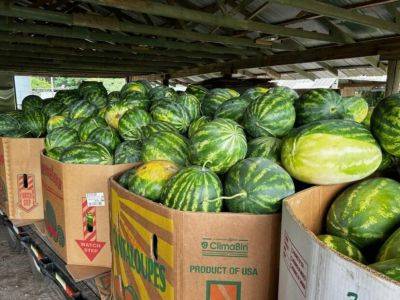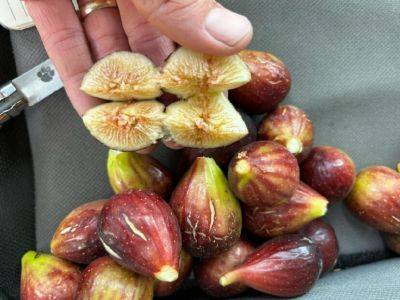Zack Snipes
SC Fruit and Vegetable Field Report January 4, 2021
24.07.2023 - 12:17 / hgic.clemson.edu
Happy New Year! We hope everyone had a great holiday season and is off to a good start in 2021. We have several virtual grower meetings coming up over the next two months, so keep an eye on the “Upcoming Events” page for info. Also, don’t forget the Southeastern Regional Fruit and Vegetable conference kicks off virtually this week, and it’s not too late to register.
Rob Last reports, “Firstly, I would like to wish everyone a happy and successful 2021. Crops in the area have slowed down with the cooler weather, and we are seeing a reduction in caterpillar activity. Strawberries look good; however, it would be advisable in advanced crops to remove any flowers to reduce the botrytis pressure later in the season. Winter vegetables are looking very good with low levels of Alternaria leaf spot in some crops. If in doubt, scout.
Zack Snipes reports, “One of my New Year’s Resolutions this year is to be more proactive rather than reactive. I would like to extend that mentality to my fieldwork as well. This year I really want to help growers nip problems in the bud before they become problems. Weekly calls, texts, check-ups, and regular visits can help both of us achieve our goals. Give me a shout in 2021.”
Justin Ballew reports, “We’ve had a lot of rain to start off the new year. A day or so after Christmas we saw temperatures down in the low 20’s and ended up with some cold damage on greens. They should grow out of it just fine. Strawberries are coming along. We are seeing spider mites build up in places, requiring treatment. Keep scouting regularly, even though it’s cool outside. Let me know if you need a second pair of eyes. On another note, I noticed daffodils starting to come up in my yard a few days before Christmas.
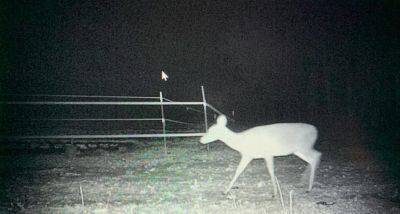
SC Fruit and Vegetable Field Report – January 25, 2021
Rob Last reports, “Strawberry crops in the area are looking good with good crown development. We are seeing open flowers and some fruit set based on warmer conditions. These crops are cause for some concern as we are likely to see damage from forecast cold snaps. There is evidence of botrytis (gray mold) in crops on cold damaged flowers and fruit. Sanitation can really help to mitigate the spread of the disease. Spider mites remain active and in places are requiring treatment. Remember to avoid pyrethroids for mite control as these can flare mite populations.”
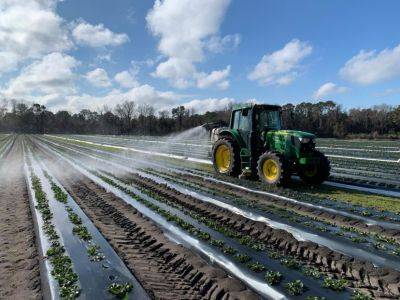
SC Fruit and Vegetable Field Report January 19, 2021
Dr. Matt Cutulle reports, “Burndown herbicide efficacy can be reduced in colder weather, especially systemic products such as glyphosate (Reduced translocation in the cold means herbicide does not move through the plant as much).”

SC Fruit and Vegetable Field Report January 11, 2021
Rob Last reports, “Vegetable crops are growing out of the impacts of frost well. There is active Alternaria in places on brassica crops. Insect activity in vegetable crops in the area remains low. Strawberry crops are moving well, with a few spider mites and aphids being observed. Remember, if mite treatment is needed, use a specific miticide to target the pest to avoid flaring populations. If you need a second pair of eyes to help scout, then please give me a shout.”
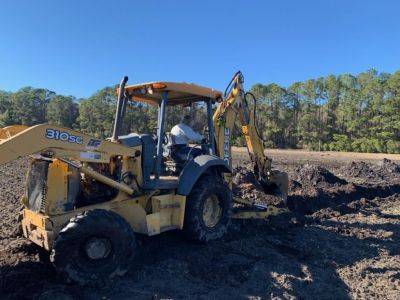
South Carolina Fruit and Vegetable Field Report February 1, 2021
Rob Last reports, “Strawberry crops are developing well; however, we are seeing gray mold phomopsis blight in some crops. Sanitation can really help prevent botrytis from spreading as we move forward when allied to fungicide applications. Keep scouting for spider mites as there are active populations in some crops. Now is a great time of year to think about the maintenance of equipment for bed formation, cultivation for spring crops, and most important product application.”
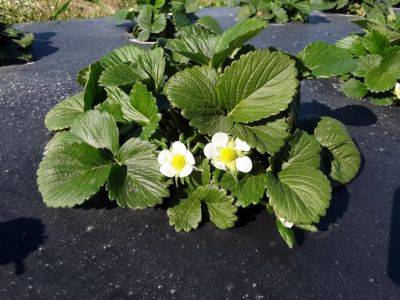
SC Fruit and Vegetable Field Report March 1, 2021
Rob Last reports, “Following a few days of warmer conditions, crops are moving on strongly. Flowering and fruit set is occurring in strawberry crops. At present, spider mites in treated crops are at very low populations, but with warmer weather, populations can increase rapidly. As we are entering flowering and fruit set, sanitation and fungicide applications will be required to keep gray mold managed. Remember to rotate FRAC codes to avoid resistance build-up. Fertigation is being applied, and it will be well worthwhile taking a tissue test from crops. Blueberries in the area are showing bud swell with early varieties showing open flower.”
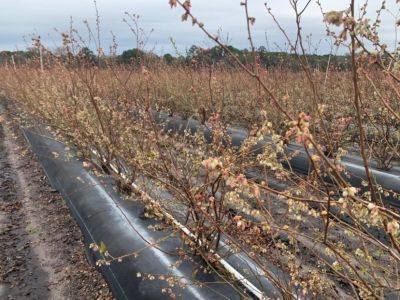
SC. Fruit and Vegetable Field Report February 22, 2021
Zack Snipes reports, “Another rainy, wet, and cold week last week. Some sunshine and warmer temperatures are coming this week. All of our fruit crops have received their chill hours and are just waiting to burst out for spring. I expect to really see fruit crops take off this week. Make sure that you have a fertility plan for the spring crop. Don’t let your crop be without fertility at the critical moments. For more information on fruit fertility, visit https://smallfruits.org/ipm-production-guides/. For smaller farms, Clemson’s Home Garden and Information Center is a wonderful resource as well.”
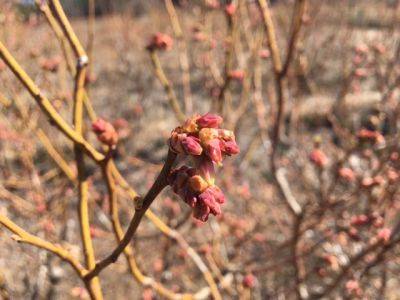
SC Fruit and Vegetable Field Report March 8, 2021
Zack Snipes reports, “We had some sunshine last week, which really brightened everything up. The last few nights have been cool, with some frost on the ground in the mornings. Things are starting to green up, and fields are drying out enough to plant. We are still direct-seeding crops around the region and will begin transplanting tomatoes in some areas this week. I spent last week checking strawberry fields to make sure things were good to go before they really bust out. I have been helping folks calibrate their drip fertigation systems for the upcoming season. If you think you need a hand with this, please let me know. Dialing in exactly how much fertilizer to use each day or week can really increase yields and lessen the amount of fertilizer that is leached. Leaching fertilizer means your plants aren’t taking it up, thus costing you money.”

SC Fruit and Vegetable Field Report- May 17, 2021
Zack Snipes reports, “Everything is progressing nicely in the Lowcountry. We got some much-needed rain last week. Temperatures have been cool, so things are somewhat slow from a developmental standpoint. All the crops look great, especially the tomato crop. We have a really nice fruit set and very little disease. I am expecting to see bacterial spot to show up sometime soon and have been getting a few calls about bacterial wilt taking down plants. I’ve also gotten a few calls about blossom end rot. That is typical on the first fruit set and will usually correct itself provided there is ample calcium in the soil AND the soil moisture is consistent. In our sandy soils, the main cause of blossom end rot is allowing the soil to dry out during the fruiting stage. Folks might want to consider multiple 30 minute to 1-hour irrigation cycles on tomatoes per day.”
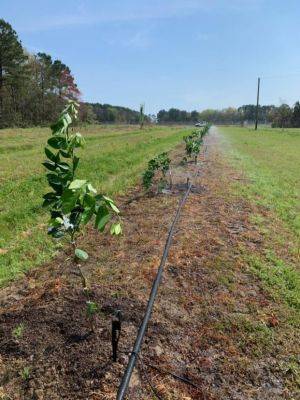
SC Fruit and Vegetable Field Report March 29, 2021
Rob Last reports, “Strawberry crops continue to develop well with sustained flowering and fruit set. Early crops are ripening well, with crops coming to market. Just a note of caution, the weather last week can be conducive to gray mold development; fungicide programs will be key. Thrips are active in some crops, so keep scouting. Melon transplants are going in the ground over the last week, with development looking very promising. Peaches in the area are all but finished flowering with a great fruit set. Finally, as we are looking at a cooler week for flowering fruit crops, keep an eye on the forecasted temperatures to determine if any protection will be required. Fruit and closed buds can tolerate cooler temperatures than flowers, but damaged flowers can increase gray mold development.”

SC Fruit and Vegetable Field Report. – April 19, 2021
Zack Snipes reports, “We had some nice weather last week. The tomato crop is looking great, as are most of our cucurbits and greens. I am seeing increased caterpillar pressure across the area. We had several calls from across the state early last week about sunburned strawberries. We went and visited the farms and tried to rule out disease, frost damage, etc. The only thing we came up with is some sort of sunburn damage. The damage was most prevalent on the southern facing sides of beds where there was poor canopy coverage. I also saw damaged tissue on tender lettuce, in my citrus plots at the CREC and on some new shoots of ornamentals at my house. I checked the solar radiation at the weather station at the CREC, and the units (W/m2) were 300-500 units higher on Monday compared to the prior 4 days. Perhaps we had intense UV levels and higher temperatures that led to this damage? Here is a really great article on the types of sunburn on plants and fruit.”
